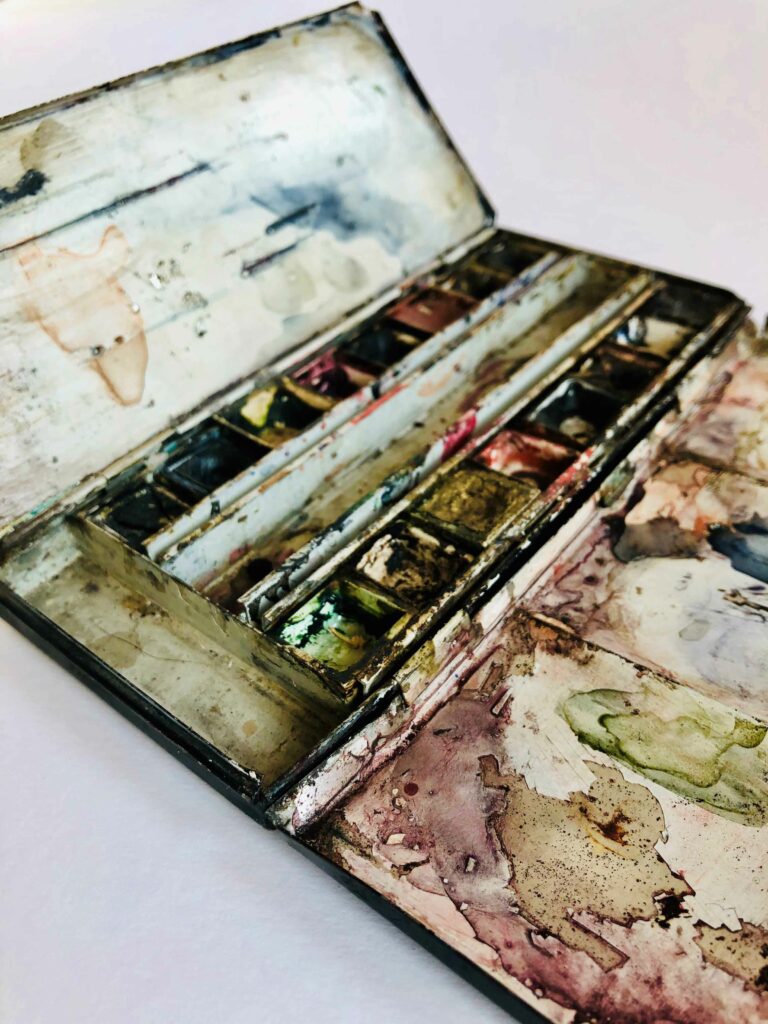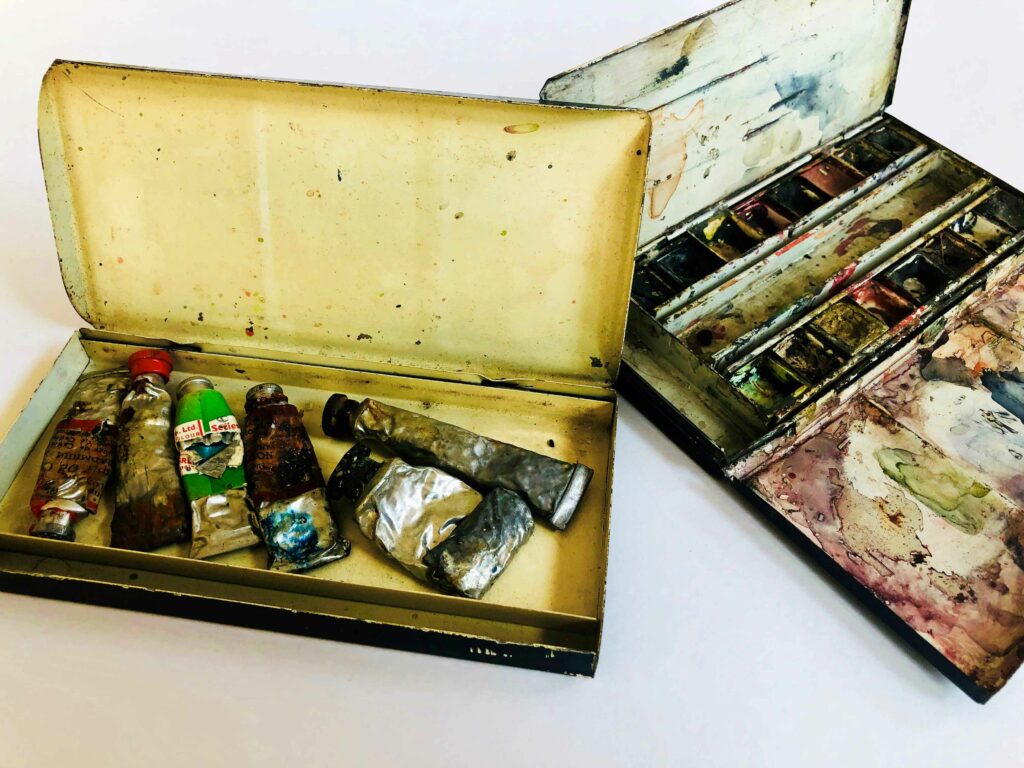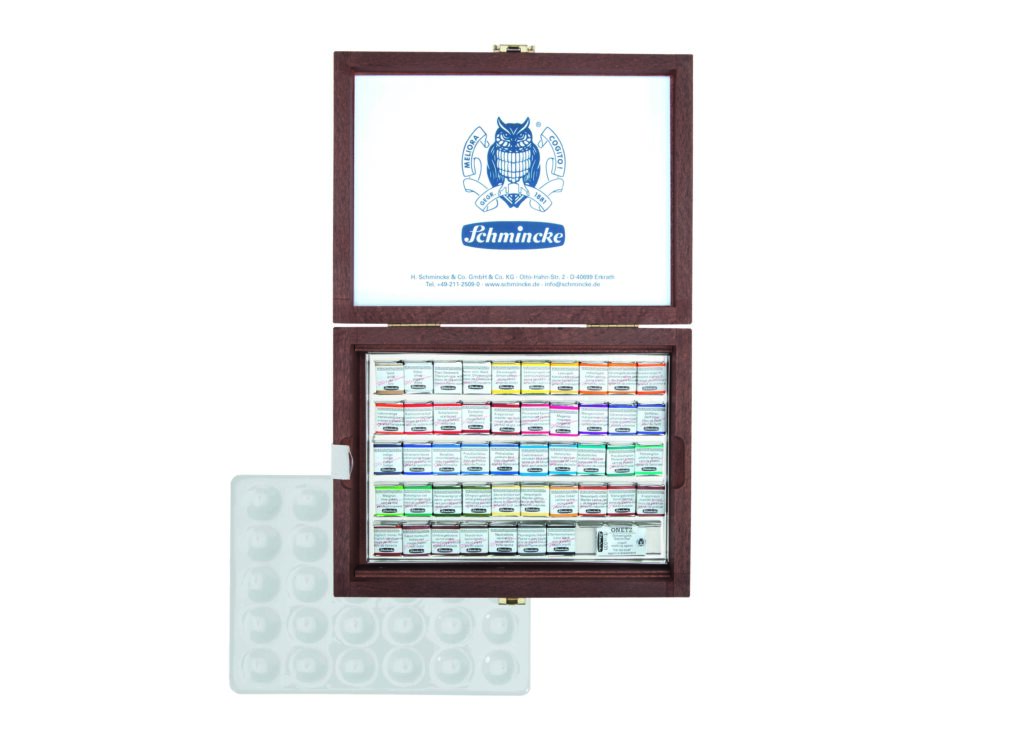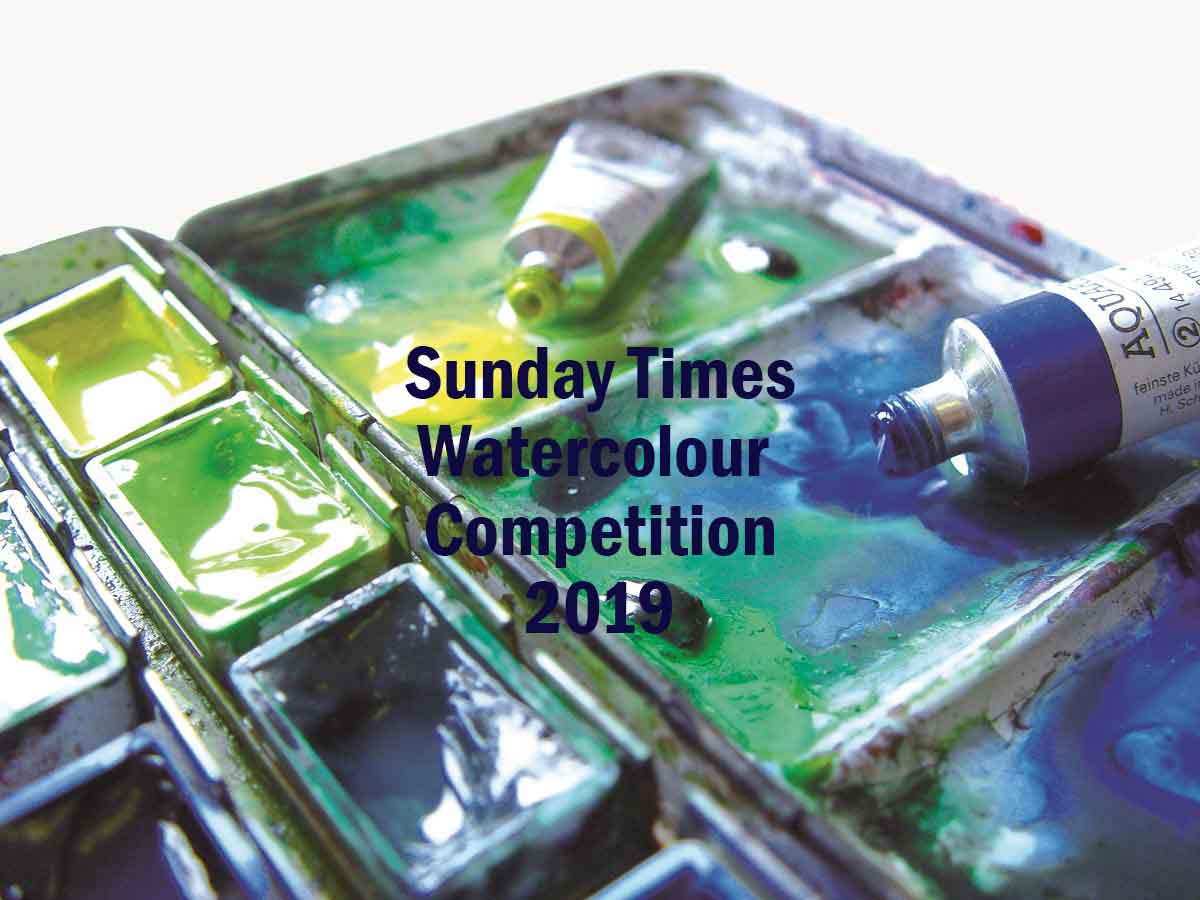What is it about watercolour?
Written for the Sunday Times Watercolour Competition 2019
with thanks to Parker Harris Contemporary Visual Arts Specialists

Watercolour is by far our best-selling product at Pegasus Art.
What is it about this medium and why do people love it so much?
In my search to answer this question, I ask a few of our worthy watercolourist customers for their view. The response is immediate and conclusive; it’s the transparency and beautiful pigments that really get people hooked. The fact that minimal equipment is required is another key factor.
Watercolour is often the entry point for people who are new to painting, and yet it is one of the most demanding mediums to master, neatly illustrated by artist Claudia Araceli, “My students tell me that they chose watercolour because they see it as the least complicated and messy – add water and paper and you’re done. The reality is, it’s the most challenging of all the mediums. Learning watercolour is a long apprenticeship, it can be frustrating, but once hooked you will love it forever. Personally, I feel watercolour is at its best when you allow it some freedom to do what it wants to do naturally, by contrast it’s at it’s very worst when forced to behave. I have found that harnessing watercolour is a matter of learning and understanding how to walk a fine line between both.”

The Golden Age of watercolour
Watercolour painting is as old as the hills, dating back to ancient timesand present in cultures from every corner of the globe. In the West, European artists illuminated manuscripts and maps, then studies of nature, botanical illustration and Renaissance portrait miniatures before fine art exploded onto the amateur hobbyist scene and spawned the ‘Golden Age of watercolour’ from the mid eighteenth to mid nineteenth century. Up to that point, painting had only been considered a career for trained professionals,but by the mid eighteenth-century artists were regularly painting outdoors and watercolours provided the ideal medium, able to capture the changing seasons, light and weather and only requiring limited, easily portable equipment. Among the aristocratic classes, watercolour painting was considered an important adornment of a ‘proper’ education and in more practical arenas it was used as a descriptive tool – engineers, military men and architects used it to render depictions of their lofty ambitions.
Artist Sarah Wimperis agrees, “Watercolour is very portable, minimal equipment needed, but most of all, it is the surprise accidents and depth of colour achieved by layering washes that makes it such a delight to use.”

En plein air since 1731
En plein air carrying cases, or pochades, are described as early as 1731 as ‘constructed of mahogany, and fitted with brass hardware and embossed-leather linings, providing porcelain mixing pans, wash bowls, storage tins for chalks or charcoal, trays for brushes and porte-crayons, scrapers, blocks of ink and colours.” This description doesn’t sound all that portable, and a less expensive alternative was required to meet the demands of the increasing number of amateur painters.
The paint cake
William Reeves, an 18th century colourman, was awarded the Silver Palette of the Society of Arts for his invention of the ‘paint cake’ in 1781. These small, hard cakes of soluble watercolour were revolutionary.By the 1830’s artists could buy watercolours in porcelain pans, before further advancements in 1842 produced the first watercolours in collapsible metal tubes, thanks to Winsor & Newton. Their machine ground pigments produced consistently high quality pigments which set an international standard and they were granted a Royal Warrant in 1841. Before long, artists could liberally wash their paper with vivid colours never used before in this way – early critics were proved very wrong indeed!

Winsor & Newton
William Winsor and Henry Newton were already working alongside some of London’s well known colour-men who procured rare pigments from across the globe and congregated in the artists quarter around Rathbone Place, central London. Indeed Constable, a neighbour, was one of their early customers. Not all colour-men were as scrupulous as Winsor & Newton however and would sell unstable mixes that would discolour or react unfavourably with other pigments. New compounds that were suddenly affordable, such as cerulean, chrome orange and cadmium yellow minimised time spent grinding and mixing with a pestle and mortar in the studio! The pocket sized ‘Shilling Colour Box’ – a lightweight japanned tin with pan colours and mixing palettes became a Victorian best seller, selling more than eleven million units between 1853 and 1870. The dye was cast and watercolour has remained fashionable ever since. Winsor & Newton.
“Watercolour is a tricky balance between planning and going with the flow, literally. It can surprise and thrill you as it moves and dries across the surface. That is why I love it.” Catherine MacDiarmid, Sky Portrait of the Year finalist 2019 and watercolour portrait artist.
Modern day watercolours
These days, you can expect to buy high quality watercolours in pans, tubes and sets from any decent art shop. One of our most highly respected suppliers is German manufacturer, Schmincke Finest Artist Paints, who have been producing highly pigmented watercolours in Dusseldorf since 1881. Capitalising on the Golden Age of Watercolour, Hermann Schmincke and Josef Horadam, two colourmen-chemists, took eleven years to research, develop and improve their watercolour range to rival that of their English counterparts. In 1892 they received a Prussian patent for their Horadam Patent-Aquarellfarben. Their Horadam Aquarell range is their flagship product, selling to fifty- three countries worldwide, with pans outselling tubes. Pans are poured, then dried in a specially designed ‘sauna for paints’ at thirty seven degrees celsius, and then filled again another three times. This slow and complex process takes four months ensuring that all the water has evaporated, leaving the purest colour possible.

Harnessing new technology
In 2017, prompted by a change in the raw material market and the new potential of the latest pigments, Schmincke increased their range to one hundred and forty colours, with thirty two as one-pigment colours. The use of highly lightfast pigments, such as quinacridone and perylene offers new possibilities for the artist, with colours being constantly optimised and a few omitted due to the lack of raw materials. You will notice product names changing too; ‘deep red’ is now ‘perylene maroon’ and ‘charcoal grey’ is renamed ‘anthracite’, ‘transparent’ replaces ‘translucent’ and so product ranges evolve. Watercolours that contained pigment granulations were once considered low grade, until a more recent desire for natural effects. Now they’ve introduced wonderfully granulating colours such as French Ultramarine, Potters Pink and Green Umber whilst other evocative new names include ‘Brilliant Opera Rose,’ ‘Mars Black’ and ‘Geranium Red’.
Urban Sketching – a new trend
Schmincke answer my question with a modern take on the medium, “We believe the popularity of our watercolours has endured because artists like to combine traditional techniques with new mediums, allowing for various experiments and mixed media techniques. In addition, Urban Sketching has become very popular around the world and sketchers prefer to use a combination of pens and watercolours with a wide range of applications and colour variety. The worldwide lettering and journaling trend favours watercolour.” And so watercolour moves with the times and the new generation of artists on a modern-day Grand Tour.
Mention must be made for non-toxic paint manufacture which is not only good practice but demanded in increasing numbers by discerning customers. Owing to the many scientific developments in the industry, artists colours are now available in environmentally friendly, synthetic alternatives.
Non toxic watercolours by Daniel Smith
One such manufacturer is Daniel Smith, who has been producing highly pigmented, granulated paints from his Seattle store since 1993. The brand is built on the premise of pure, non-toxic materials and even today, they employ a modern-day colour-man who travels the globe in search of the finest pigments and minerals available. They produce an astonishing two hundred and fifty watercolours, many of which are unique to Daniel Smith and include lightfast and durable quinacridone pigments. These pigments, originally developed for the automotive industry are loved for their brilliance and transparency.
To use semi-precious minerals in their PrimaTek range is inspired ~ the first colour was made from Lapis Lazuli Genuine in 1998 and was so popular they added Amethyst Genuine, Piemontite Genuine and Serpentine Genuine. The uniqueness of their product lies in the miniscule granules of pigment which move and separate randomly and work a special kind of magic on the paper. The fun doesn’t end there ~ other ranges include luminescent watercolours which shine and shimmer ‘like hummingbird feathers’ and a range of cadmium hues to emulate the richness and density of the original cadmiums.
The unpredictability of watercolours
Artist Barry Herniman has used watercolours throughout his career and tries to explain why, “Watercolour has always been my first love. I am captivated by its tremendous fluidity, transparency and vibrancy. I have never tired of watching pure pigments mixing and mingling producing those wonderful “happy accidents” that glow on the paper. It is also my preferred medium when sketching en plein air because of its versatility and ease of transportation. Equipment can be kept to the bare minimum but the results can be quite striking. Watercolour has rather bad press for being a difficult medium to handle and is somewhat unforgiving in its practice. To quote Philip Jamison, a terrific American watercolourist, “watercolour can be worked over but must not be overworked” and I think that just about says it all.”
The Royal Watercolour Society has carried the same strapline for more than two hundred years; “Celebrating the finest artists working in watercolour since 1804. The aim of the Society is to promote, by example and education, the understanding, appreciation and enjoyment of this exciting media.” Watercolour shows no signs of fading into obscurity.

https://waterfallmagazine.com
Attractive section of content. I simply stumbled upon your site and in accession capital to say that I get actually enjoyed account your weblog posts.
Any way I’ll be subscribing in your feeds and even I achievement
you get entry to persistently rapidly.